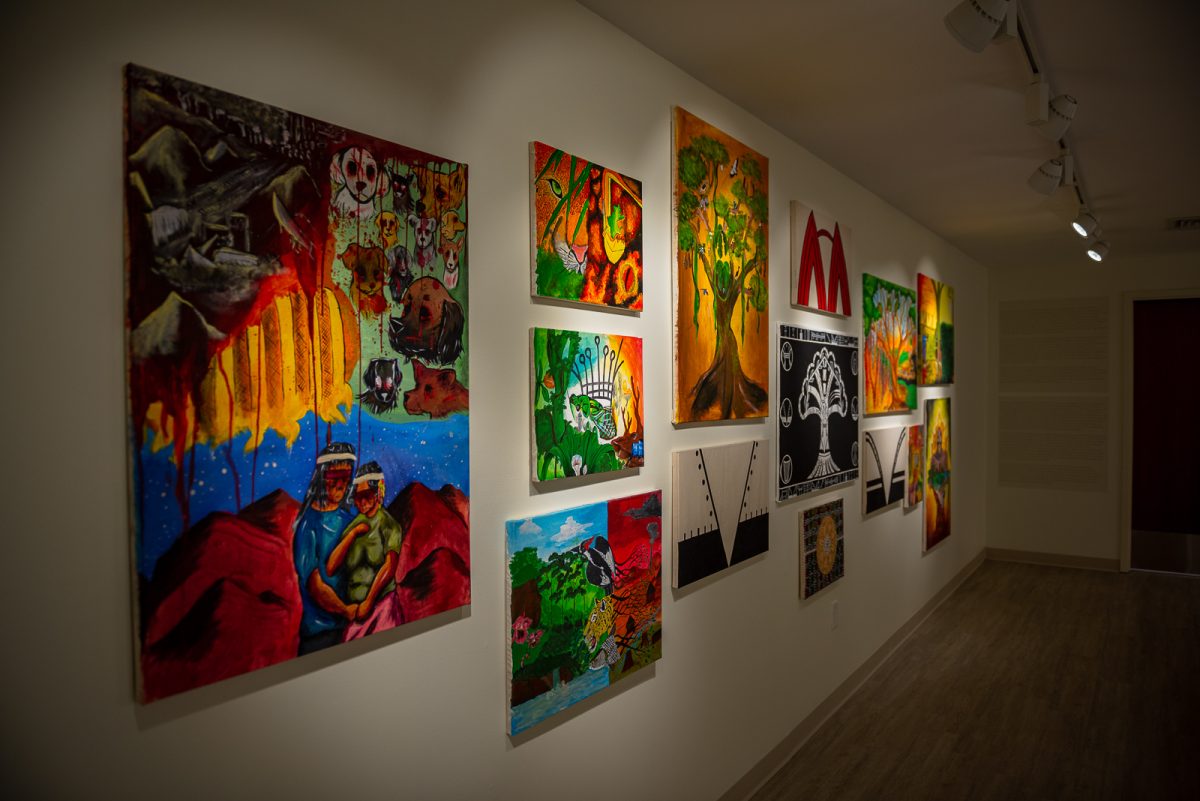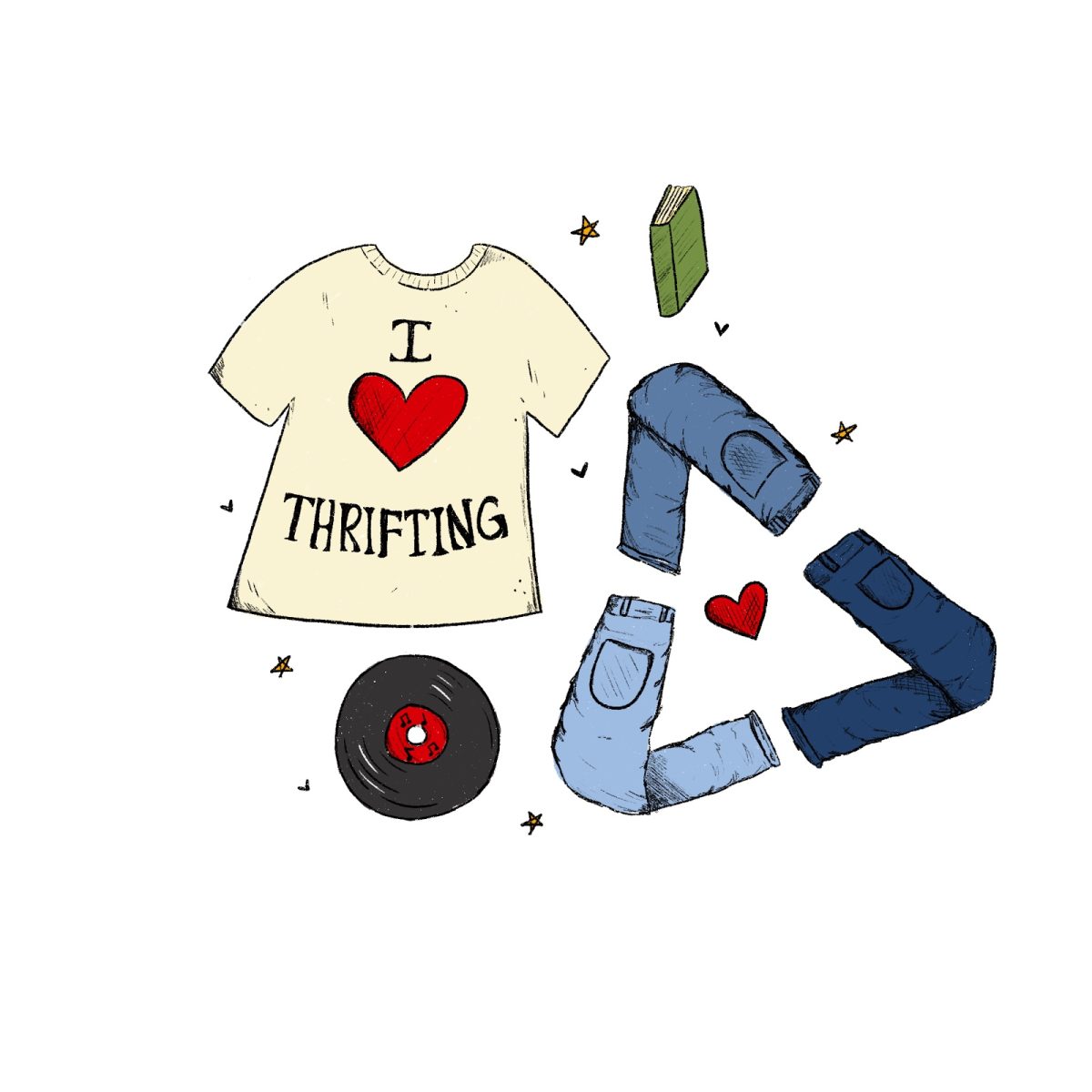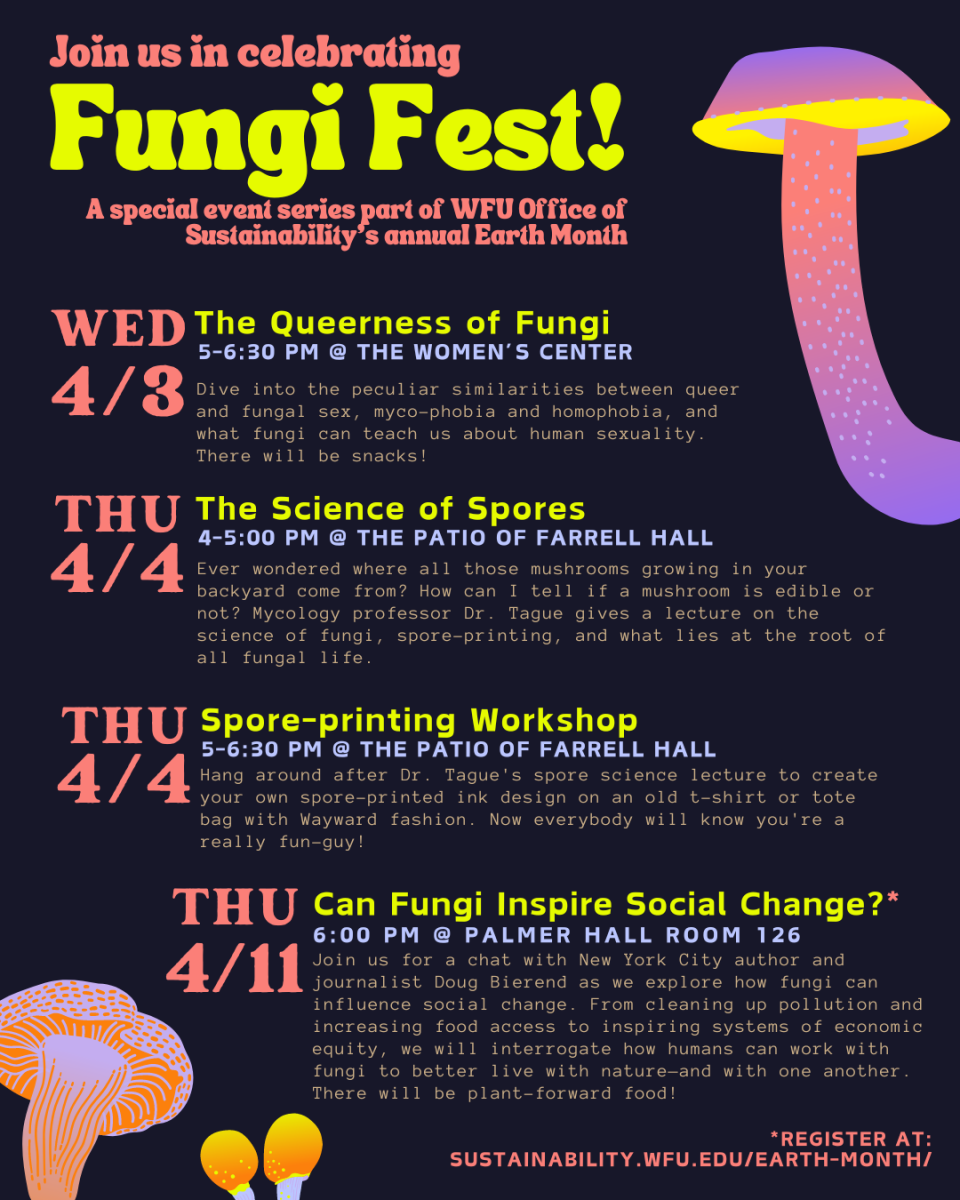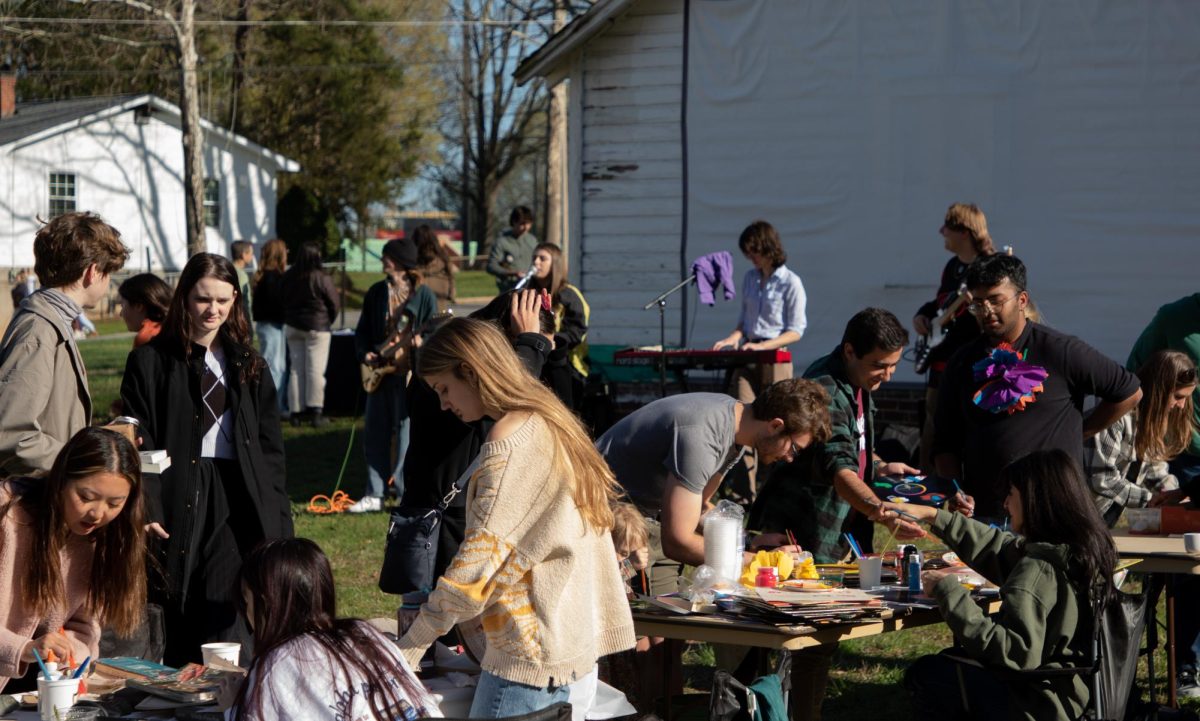The Lam Museum of Anthropology’s new exhibit showcases indigenous artwork
The Timothy S. Y. Lam Museum of Anthropology has added a new exhibit titled “Mine: What is Ours in the Wake of Extraction”. From now until Dec. 8, everyone can witness the intense works that illustrate an enormous environmental justice issue.
When walking into this section of the museum, attention is immediately drawn to the colorful images upon the walls. Indigenous artists of the Peruvian Amazon, working through the Etochime Harakbut Artist Collective, have poured a little piece of their souls into the canvases that now lean on the walls of Wake Forest University’s very own Lam Museum of Anthropology.
This art collection specifically focuses on the illegal mining of Amazonian gold, which has continued to increase in frequency. The effects of this mining are the main subjects of the Etochime Harakbut Artist Collective’s work based on environmental and indigenous injustice.
“The fact that this is an exhibit of contemporary art instead of anthropological artifacts sets this apart from our other exhibits. It is also more action-oriented, in that the exhibit has a clear point of view that is addressing an ongoing problem,” said Dr. Andrew Gurstelle, curator of the Lam Museum.
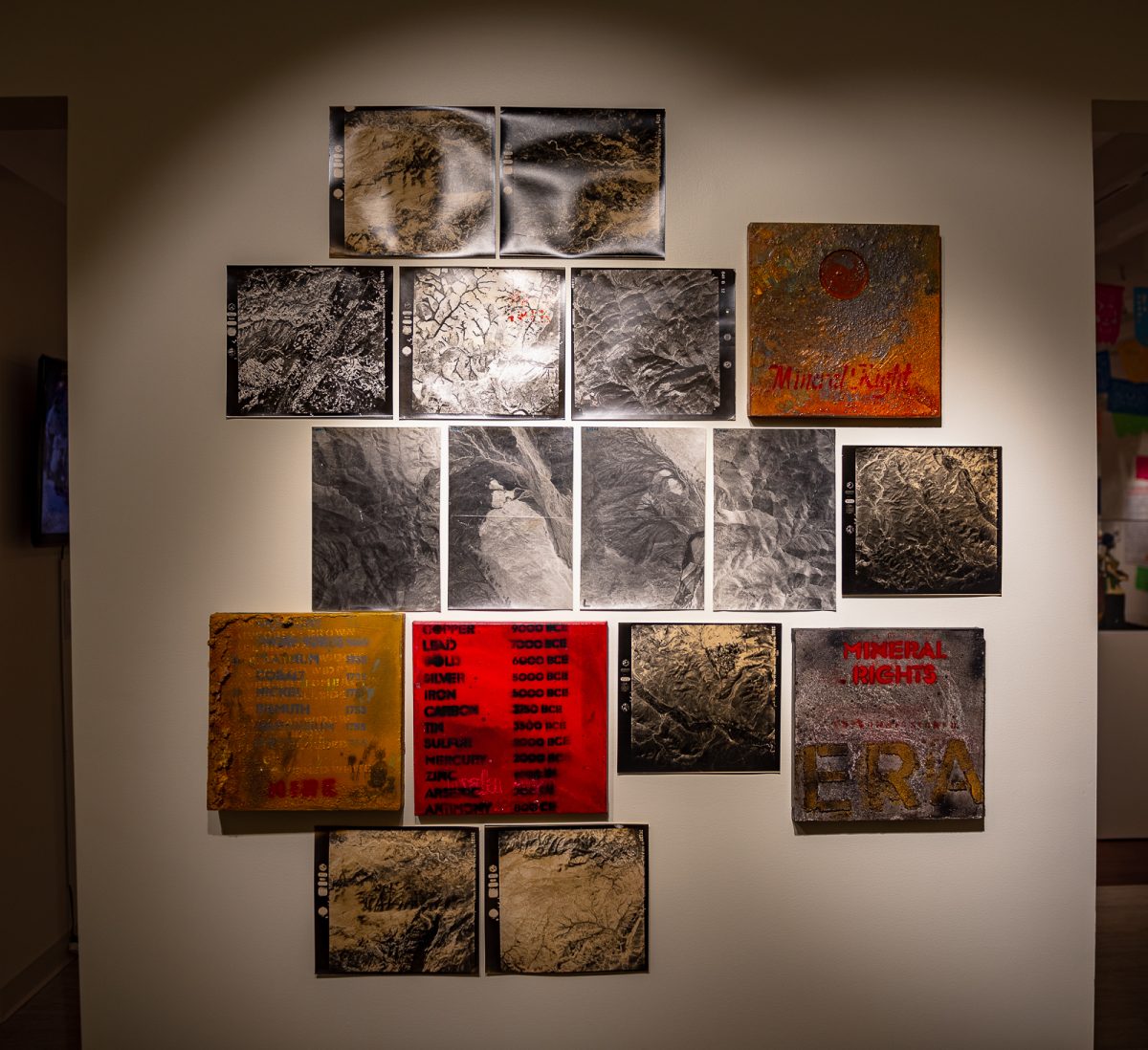
Each of the fourteen paintings depict the environmental justice issue in different ways. One artist has painted a large tree in the foreground of gold, with many birds flying around and perching on the tree’s branches. The trunk is twisted with a silhouette of hips, a chest and reached arms seemingly holding up the ecosystem of birds above her.
This tree acts as a personification of the Amazon, which does so much for many living things in the world. The rainforest protects and prospers off of its own growth and life. The more humans have arrived in the area with their construction vehicles and lack of care for the life they are destroying, the more the Amazon loses the chance to revitalize itself.
Another painting depicts a monster of gold holding up the rainforest, with all of its life and balance. Beneath the Amazon are several indigenous people losing their homes to the monster above them. This and the previously described work have similar basic concepts, but the literal human figures in the second add a much deeper concept to the art. The people that live among the Amazon are not only losing their homes, but they are losing their culture and families with it. The monster of gold mining and further exploitation has created a huge environmental injustice.
Dr. Julie Velásquez Runk, the director of the Environment and Sustainability Studies program, has done years of research with indigenous communities.
“Environmental injustices and extractivisms, such as mining, that indigenous peoples of the Americas face are not new, but stem from centuries of settler colonialism,” Velásquez Runk said. “I am happy to see that these topics are garnering more attention in academic and public settings, such as the MINE exhibit. There remains, though, a need for us to focus on undoing the structural inequality and consumption that continue to perpetuate these harms.”


